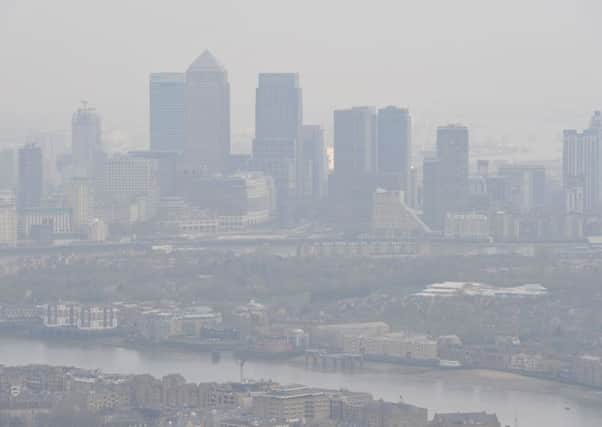Philippa Oldham: Why we need a new clean air act to save lives


The Act required everyone to do their bit: factories had to make their chimneys higher, householders had to burn smokeless fuels, and Government moved some power stations out of cities.
Today, while the effects of pollution are perhaps not quite as dramatic as in the 1950s, globally, health professionals estimate that air pollution causes one in 10 deaths and their studies have shown that in the UK air pollution is linked to thousands of deaths every year.
Advertisement
Hide AdAdvertisement
Hide AdIt is time for Government and society as a whole to re-prioritise this issue. Government needs to create a modern Clean Air Act that takes a holistic approach and does not just target individual sectors. It needs to encourage everyone to play a role in reducing emissions and improving air quality. Its scope must be broad and address all emissions from transport, whilst being strategically robust and long-term.
As a result of climate change, the health risks caused by unsafe air quality will only become worse. Levels of ozone, which harms lung function, are predicted to increase, and changes in the seasons, temperature and weather patterns will have an impact on exposure to pollen, increasing allergies and respiratory irritants.
Part of the problem is that climate change, air pollution and environmental issues are often seen as distinct, and sometimes even unrelated problems. When in reality we need to consider them as interlinked challenges to our health and environment that need to be tackled.
For example, before encouraging companies to scrap diesel trucks in favour of more environmentally friendly vehicles, we need to consider the associated emissions and environmental impact of scrapping vehicles and manufacturing new ones which are currently uneconomically viable to be recycled.
Advertisement
Hide AdAdvertisement
Hide AdIn terms of air quality, it is vital that we calculate and monitor all our emissions, recording those responsible for climate change, for example greenhouse gases, and air quality, such as particulate matter and nitrogen dioxide.
Currently, UK cities use air quality monitoring data. However, this measures ambient pollution and has no ability to apportion to source, basing its analysis on historical data looking at the total concentration of pollution at the sites, rather than emissions from original sources.
The transport sector has significant opportunities to reduce emissions, by, for example, efficiency improvements in conventional vehicles, switching to ultra-low emissions vehicles and changing travel behaviour. However, in order to make these changes the sector needs to have clear signals and policies backed up by evidence.
A Clean Air Act should not be a knee-jerk reaction, but a set of policies based on robust evidence. It is only with a coherent national scheme to monitor emissions from different modes of transport that informed targets can be set.
Advertisement
Hide AdAdvertisement
Hide AdWhile much of the media focus is on our capital, it is worth noting that this is a serious problem that affects us all, including Yorkshire. Government statistics show a total of 278 of the 391 local authorities (71 per cent) missed their air quality targets last year, up from 258 in 2010. We all have a part to play.
While investments in our public transport network are helping to reduce emissions, we must address how to encourage individuals from across the UK to switch to low-carbon emission vehicles, make use of scrappage schemes or retrofitting grants, or shift to public transport and change their travel patterns.
Another option is to encourage non-motor alternatives such as walking or cycling, further enhanced by the creation of dedicated cycle lanes and better workplace storage and shower facilities.
There is no silver bullet, no one solution to solve this crisis. Different communities will require their own solutions; for example, in cities outside London the proportion of public transport is lower, so the proportion of emissions from diesel and petrol cars is greater. Technology will play a part in addressing this problem, but there is a role and responsibility for individuals too.
Advertisement
Hide AdAdvertisement
Hide AdBack in the 1950s, doctors kick-started a national movement on the risks of smoking; maybe there is a need to start doing the same with air quality, to encourage people to drive less and use public transport, walk and cycle more.
Philippa Oldham is lead author of the Institution of Mechanical Engineers’ report ‘A breath of fresh air: new solutions to reduce transport emissions’ . Further details can be found at www.imeche.org. cycle more.